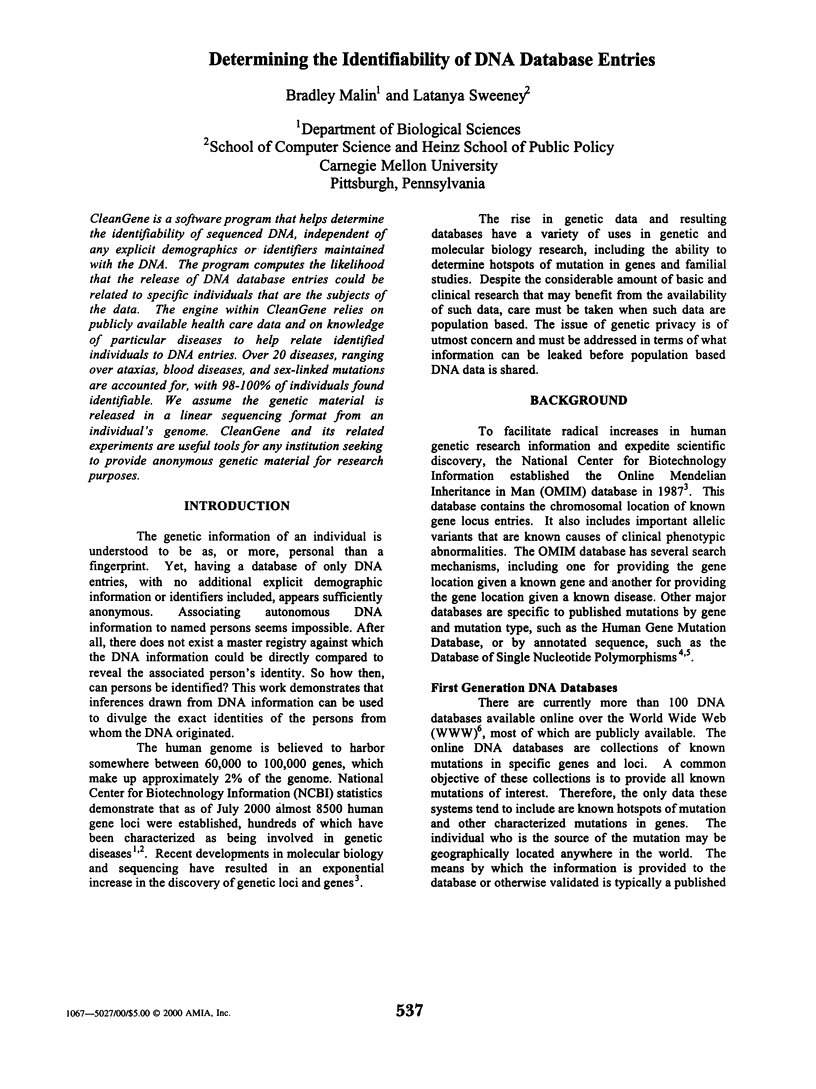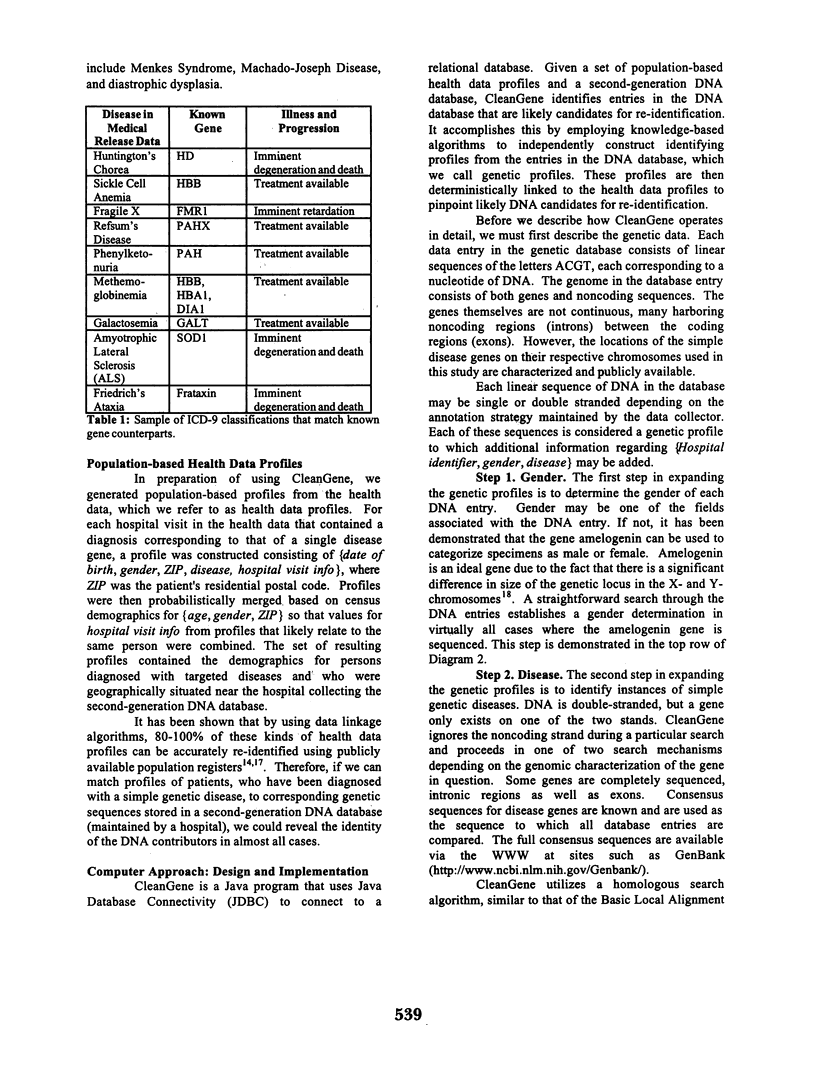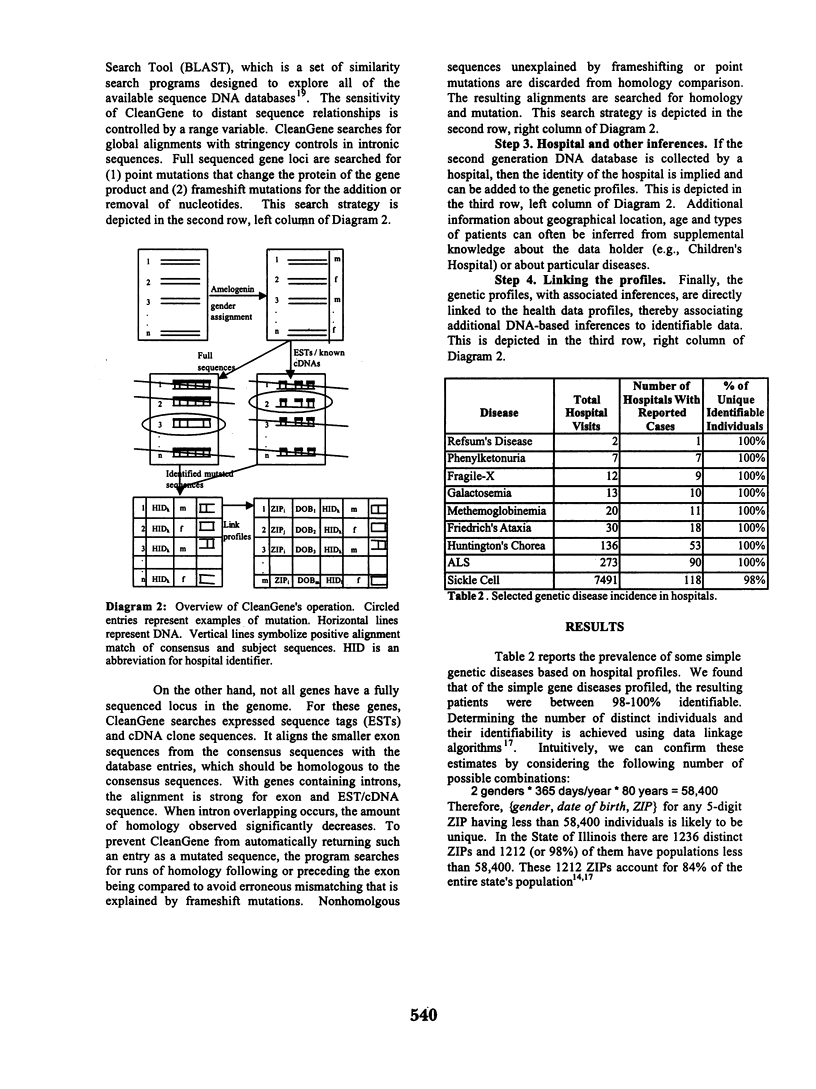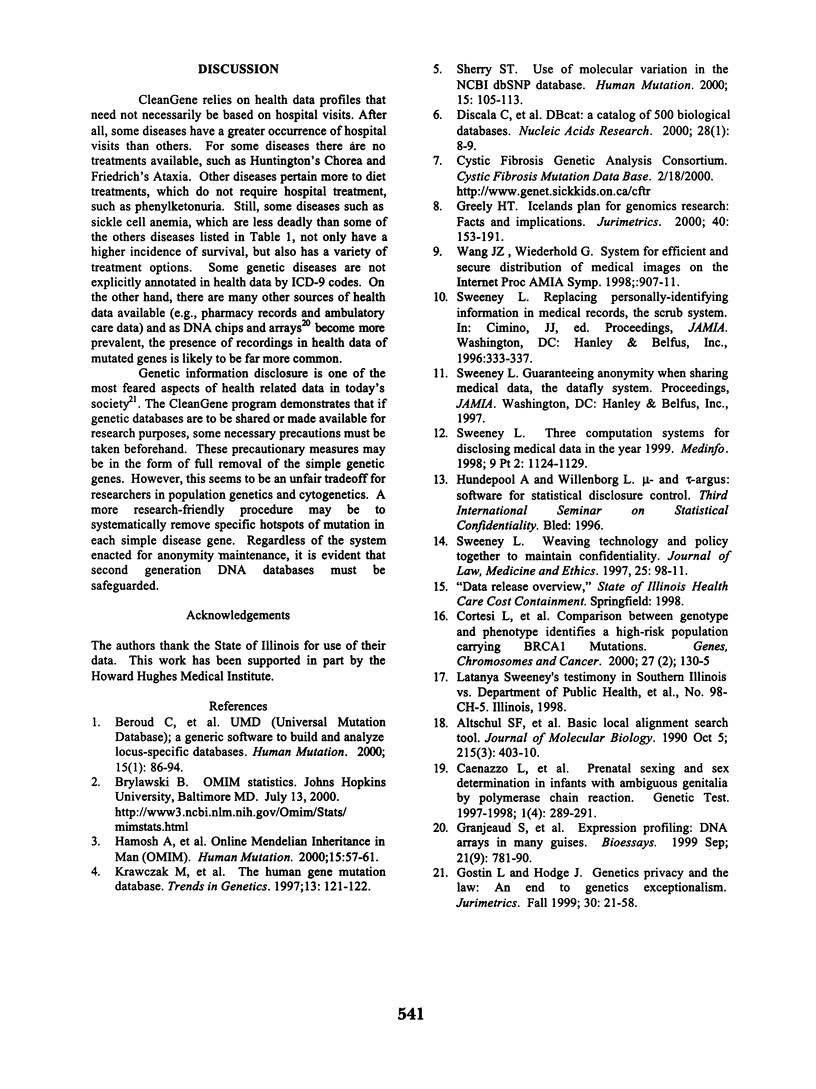Abstract
CleanGene is a software program that helps determine the identifiability of sequenced DNA, independent of any explicit demographics or identifiers maintained with the DNA. The program computes the likelihood that the release of DNA database entries could be related to specific individuals that are the subjects of the data. The engine within CleanGene relies on publicly available health care data and on knowledge of particular diseases to help relate identified individuals to DNA entries. Over 20 diseases, ranging over ataxias, blood diseases, and sex-linked mutations are accounted for, with 98-100% of individuals found identifiable. We assume the genetic material is released in a linear sequencing format from an individual's genome. CleanGene and its related experiments are useful tools for any institution seeking to provide anonymous genetic material for research purposes.
Full text
PDF




Selected References
These references are in PubMed. This may not be the complete list of references from this article.
- Altschul S. F., Gish W., Miller W., Myers E. W., Lipman D. J. Basic local alignment search tool. J Mol Biol. 1990 Oct 5;215(3):403–410. doi: 10.1016/S0022-2836(05)80360-2. [DOI] [PubMed] [Google Scholar]
- Béroud C., Collod-Béroud G., Boileau C., Soussi T., Junien C. UMD (Universal mutation database): a generic software to build and analyze locus-specific databases. Hum Mutat. 2000;15(1):86–94. doi: 10.1002/(SICI)1098-1004(200001)15:1<86::AID-HUMU16>3.0.CO;2-4. [DOI] [PubMed] [Google Scholar]
- Caenazzo L., Ponzano E., Greggio N. A., Cortivo P. Prenatal sexing and sex determination in infants with ambiguous genitalia by polymerase chain reaction. Genet Test. 1997;1(4):289–291. doi: 10.1089/gte.1997.1.289. [DOI] [PubMed] [Google Scholar]
- Cortesi L., Turchetti D., Bertoni C., Bellei R., Mangone L., Vinceti M., Federico M., Silingardi V., Ferrari S. Comparison between genotype and phenotype identifies a high-risk population carrying BRCA1 mutations. Genes Chromosomes Cancer. 2000 Feb;27(2):130–135. [PubMed] [Google Scholar]
- Discala C., Benigni X., Barillot E., Vaysseix G. DBcat: a catalog of 500 biological databases. Nucleic Acids Res. 2000 Jan 1;28(1):8–9. doi: 10.1093/nar/28.1.8. [DOI] [PMC free article] [PubMed] [Google Scholar]
- Gostin L. O., Hodge J. G. Genetic privacy and the law: an end to genetics exceptionalism. Jurimetrics. 1999 Fall;:21–58. [PubMed] [Google Scholar]
- Granjeaud S., Bertucci F., Jordan B. R. Expression profiling: DNA arrays in many guises. Bioessays. 1999 Sep;21(9):781–790. doi: 10.1002/(SICI)1521-1878(199909)21:9<781::AID-BIES10>3.0.CO;2-2. [DOI] [PubMed] [Google Scholar]
- Greely H. T. Iceland's plan for genomics research: facts and implications. Jurimetrics. 2000 Winter;40:153–191. [PubMed] [Google Scholar]
- Hamosh A., Scott A. F., Amberger J., Valle D., McKusick V. A. Online Mendelian Inheritance in Man (OMIM). Hum Mutat. 2000;15(1):57–61. doi: 10.1002/(SICI)1098-1004(200001)15:1<57::AID-HUMU12>3.0.CO;2-G. [DOI] [PubMed] [Google Scholar]
- Krawczak M., Cooper D. N. The human gene mutation database. Trends Genet. 1997 Mar;13(3):121–122. doi: 10.1016/s0168-9525(97)01068-8. [DOI] [PubMed] [Google Scholar]
- Soussi T., Dehouche K., Béroud C. p53 website and analysis of p53 gene mutations in human cancer: forging a link between epidemiology and carcinogenesis. Hum Mutat. 2000;15(1):105–113. doi: 10.1002/(SICI)1098-1004(200001)15:1<105::AID-HUMU19>3.0.CO;2-G. [DOI] [PubMed] [Google Scholar]
- Sweeney L. Three computational systems for disclosing medical data in the year 1999. Stud Health Technol Inform. 1998;52(Pt 2):1124–1129. [PubMed] [Google Scholar]
- Wang J. Z., Wiederhold G. System for efficient and secure distribution of medical images on the Internet. Proc AMIA Symp. 1998:907–911. [PMC free article] [PubMed] [Google Scholar]


